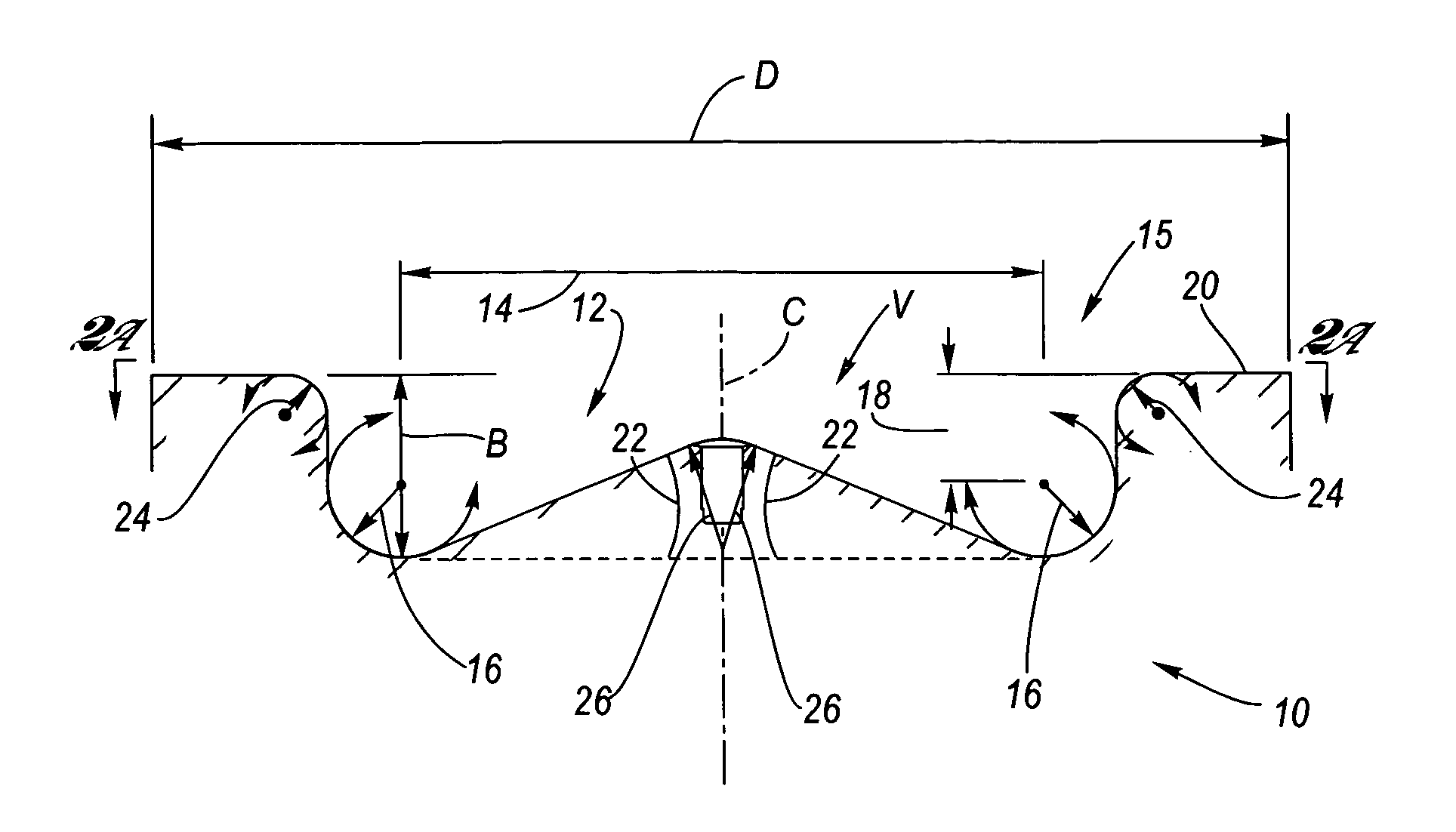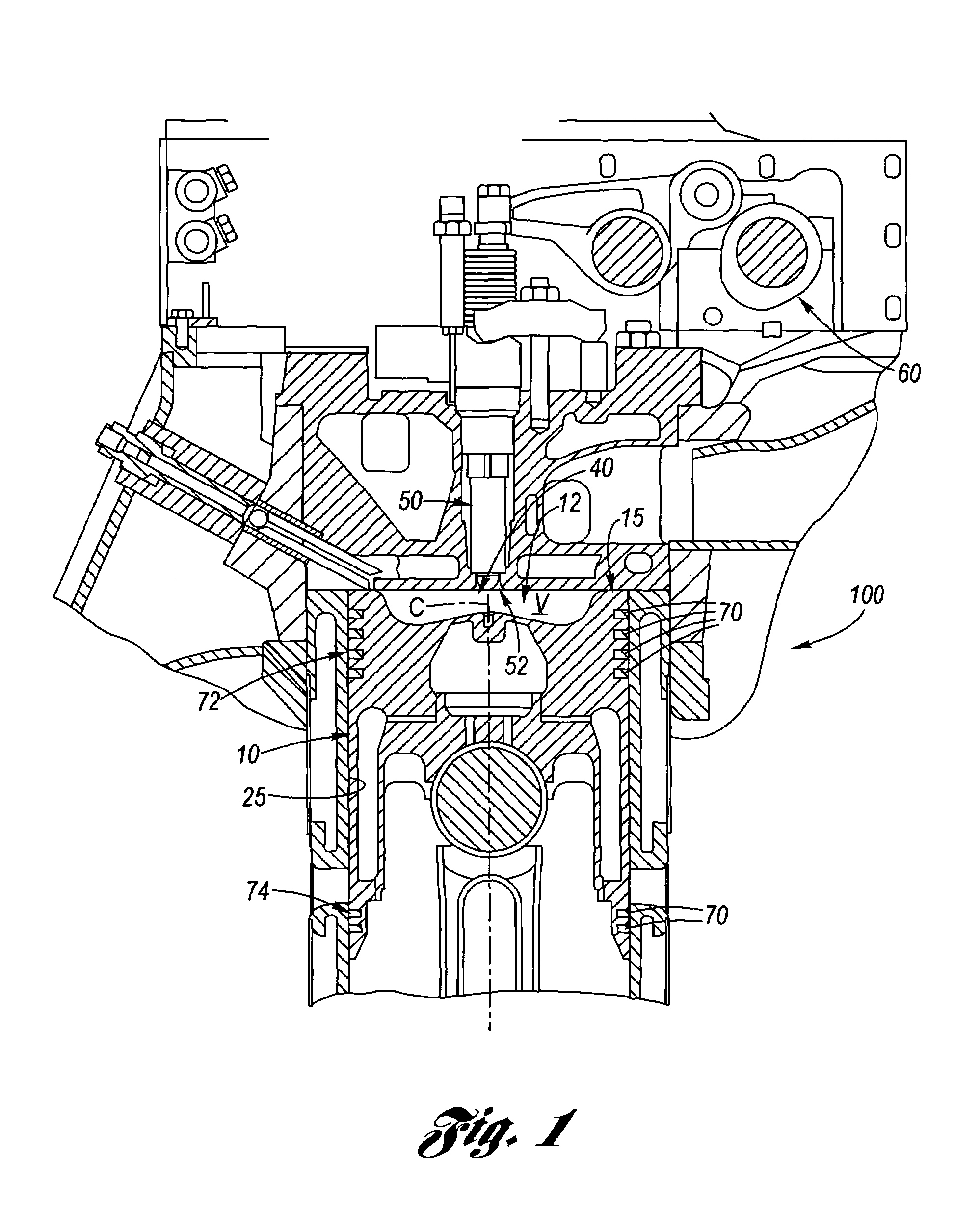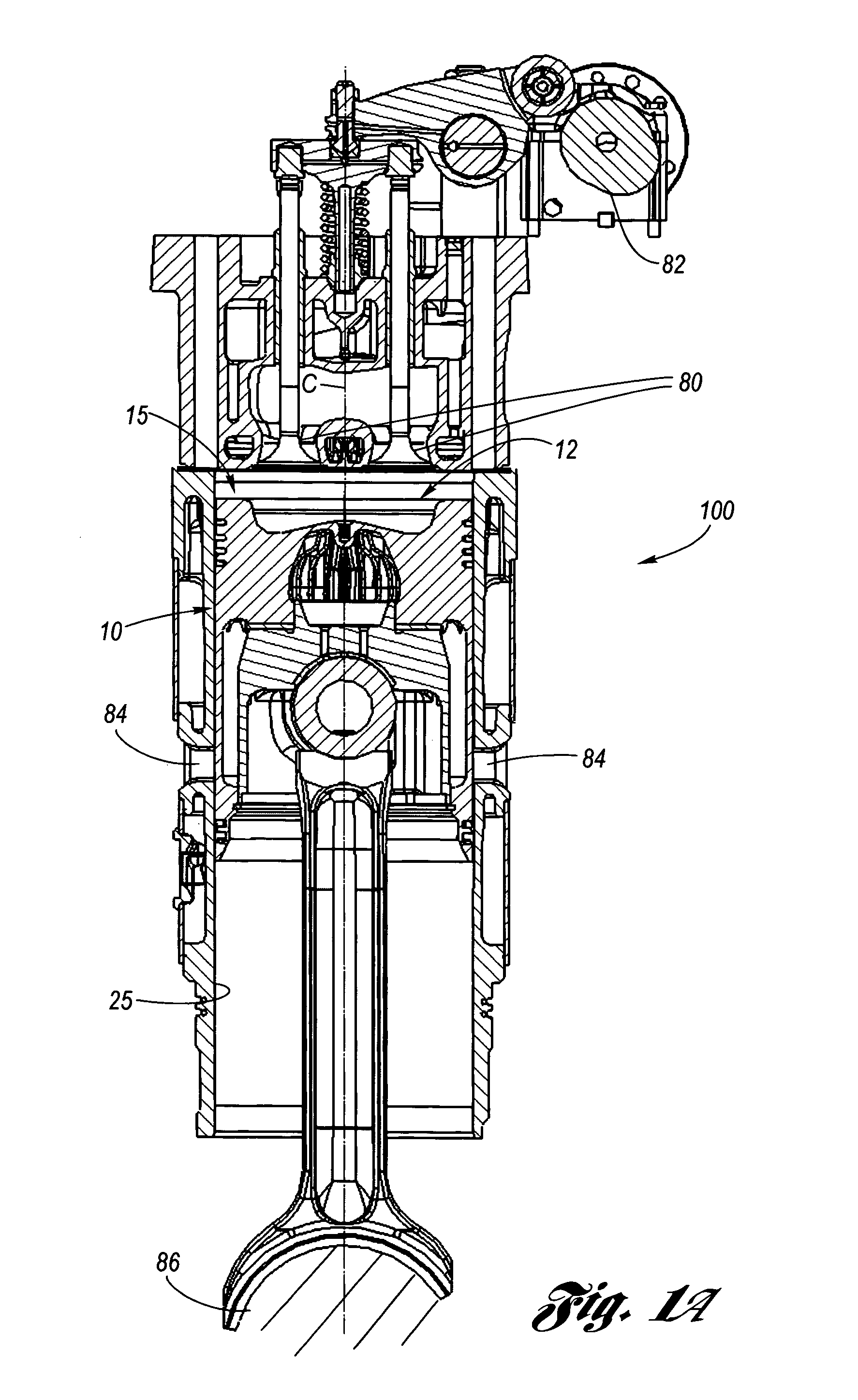Optimized low emission two-stroke internal combustion diesel engine
a two-stroke, internal combustion technology, applied in the direction of machines/engines, combustion types, lighting and heating apparatus, etc., can solve the problems of nosub>x /sub>emissions drop, optimize the turbocharger, and reduce the oil consumption of the piston ring. , the effect of clean combustion
- Summary
- Abstract
- Description
- Claims
- Application Information
AI Technical Summary
Benefits of technology
Problems solved by technology
Method used
Image
Examples
Embodiment Construction
[0023]Referring now to the drawings, FIGS. 1 through 9 depict various aspects of optimization of a two-stroke internal combustion diesel engine, as for example the General Motors Corporation 710 and 645 Series engines, according to the present invention.
[0024]FIGS. 1 and 1A show a schematic views of an optimized two-stroke diesel engine 100 having a piston 10 reciprocal within a cylinder liner 25, wherein the piston has a piston bowl 12 formed in the piston crown 15 thereof and concentrically disposed about a centerline C of the piston, according to the present invention.
[0025]As can be best understood by reference to FIGS. 2 and 2A, the shape of the piston bowl 12 is one of several key design changes made to meet U.S. EPA Tier 2 locomotive emissions standards. This accomplishment was achieved through a specific combination of critical characteristics, including: a toroidal major diameter 14 preferably equal to 4.960 inches, plus or minus 0.020 inches; a toroidal minor radius 16 pre...
PUM
| Property | Measurement | Unit |
|---|---|---|
| diameter | aaaaa | aaaaa |
| diameter | aaaaa | aaaaa |
| included angle | aaaaa | aaaaa |
Abstract
Description
Claims
Application Information
 Login to View More
Login to View More - R&D
- Intellectual Property
- Life Sciences
- Materials
- Tech Scout
- Unparalleled Data Quality
- Higher Quality Content
- 60% Fewer Hallucinations
Browse by: Latest US Patents, China's latest patents, Technical Efficacy Thesaurus, Application Domain, Technology Topic, Popular Technical Reports.
© 2025 PatSnap. All rights reserved.Legal|Privacy policy|Modern Slavery Act Transparency Statement|Sitemap|About US| Contact US: help@patsnap.com



